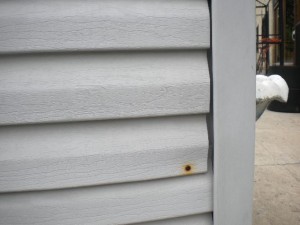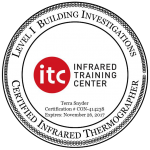 The use of vinyl siding on the exterior of residential and commercial buildings is the leading cladding material for exterior surfaces. Vinyl siding is cost effective, appealing, easy to install, and when installed correctly, easy to maintain.
The use of vinyl siding on the exterior of residential and commercial buildings is the leading cladding material for exterior surfaces. Vinyl siding is cost effective, appealing, easy to install, and when installed correctly, easy to maintain.
Vinyl siding can definitely add to the value of a home because it drastically enhances the outside look. However, just like anything else that is not installed properly or exposed to harsh weather, the material can get damaged.
There can be vinyl siding problems undetected to the average eye. Proper installation is essential for preserving the longevity and durability of the siding. For home selling and remodels, having your vinyl siding inspected can save on money and time. To conduct a proper vinyl siding inspection, there are certain things to look for. Here are some tips from the National Association Of Certified Home Inspectors.
- Siding can become rippled when nails or staples are inserted into the face of the siding.
- Caulk is not needed on vinyl siding. Often times, caulk can be found where the panels meet the receiving end of the inside, outside corners or J-trim.
- Vinyl siding will expand as long as there’s a ¼ inch of clearance at all openings and stop points.
- Fasteners need to be driven into the slots straight and level. If not, you’ll notice that the siding looks distorted and panels may begin to buckle.
- When hammering the fasteners in, there needs to be about 1/32-inch clearance between the nail head and the siding panel. The nail is not to be driven flush against the panel.
- Substantial sheathing and furring strips are surfaces to which a nail can be easily driven into, guaranteeing nails remain in place.
- All nails should be nailed into the center of the slot. This helps with the process of expansion and retraction.
- Panels that are easily moved side to side are an indication of a proper installation.
- Building paper and/or housewrap should be placed behind the siding panels to prevent water leaks.
- Drainage holes can also be installed behind the panels to allow water to drain away.
- Lap joints should be installed so they stagger. Vertically lining these joints is incorrect.
- Fixtures such as exterior lights should be mounted to specific mounting blocks. When fixtures are attached to the siding directly, problems arise.
- Corrosion-resistant fasteners should be used to prevent rotting.
- Around windows and doors, vinyl siding will disappear in J-molding when installed right.













